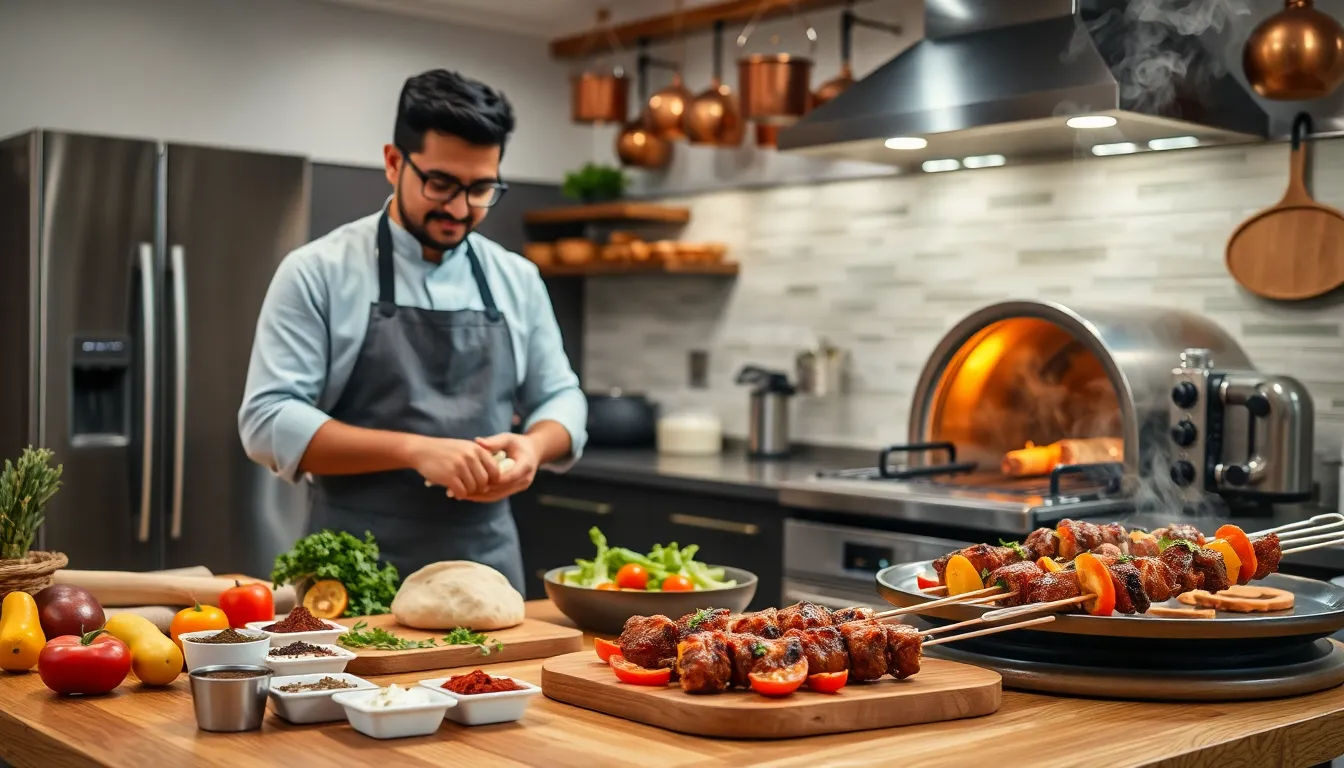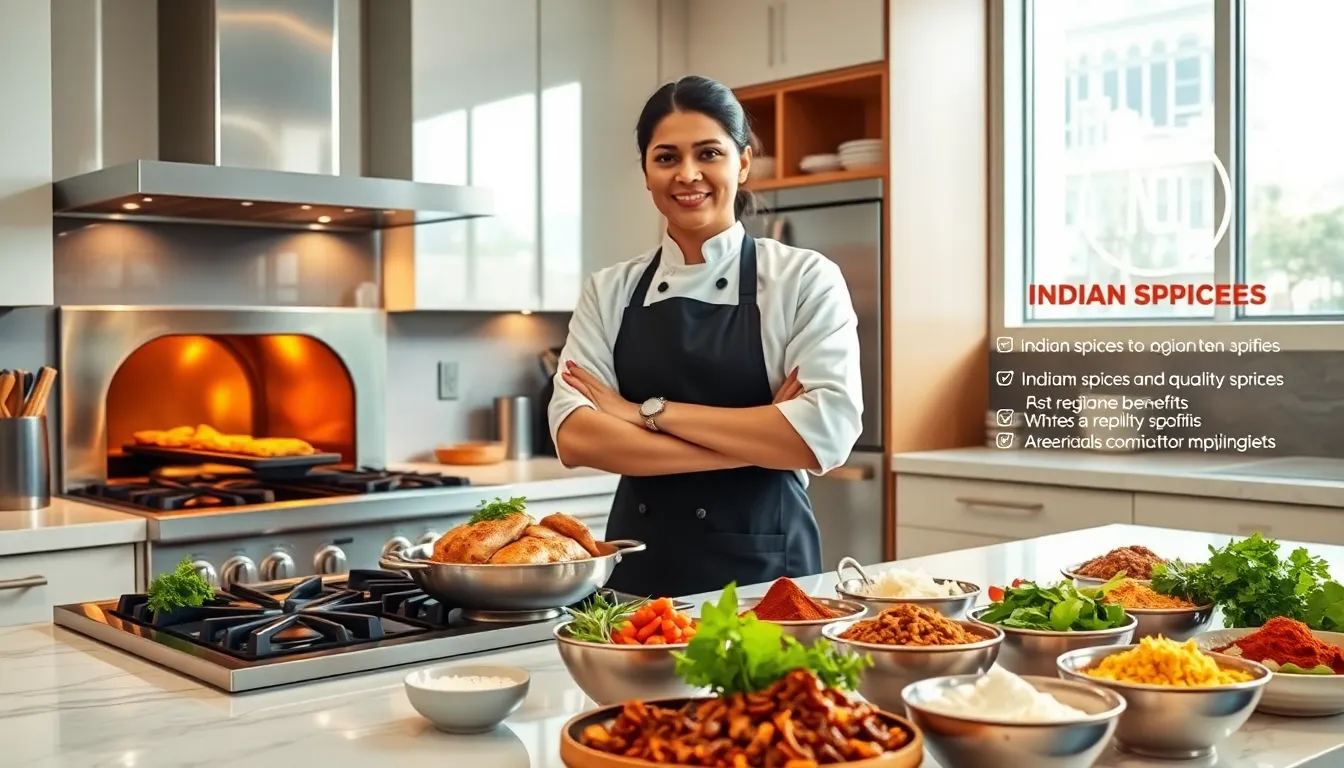When it comes to food, no one does it quite like India. With vibrant flavors, aromatic spices, and techniques passed down through generations, Indian cooking offers a delicious journey for anyone willing to take the plunge. Ever tried making biryani? It’s like trying to tame a wild horse: tricky but oh-so-rewarding. In this text, we jump into the intriguing realm of Indian cooking techniques, exploring regional diversity, essential methods, and a sprinkle of health benefits. Buckle up. Your taste buds are about to embark on an adventure.
Table of Contents
ToggleIntroduction to Indian Cooking Techniques

Indian cooking techniques are like a treasure chest filled with rich flavors and textures. From the bustling streets of Mumbai to the serene backwaters of Kerala, every region has its own unique way of preparing food. Techniques range from the intricate art of tandoor cooking to the more simplified method of simmering spices, each with its own charm and purpose. Understanding these techniques opens up new realms in the culinary world, offering insights into not just the recipes but the cultural significance behind them.
The magic begins with the right approach, combining traditional wisdom with a sprinkle of creativity. This journey through Indian cooking invites food enthusiasts to explore how these techniques enhance flavors and bring people together.
Regional Diversity in Indian Cooking
One of the most captivating aspects of Indian cooking is its regional diversity. The subcontinent is a melting pot of cultures, each adding its unique spin on dishes.
Northern India
In regions like Punjab and Uttar Pradesh, cooking methods often involve the tandoor, a clay oven used to produce tandoori chicken and naan. The robust spices used often lend themselves well to rich, creamy curries.
Southern India
In contrast, southern states like Kerala and Tamil Nadu focus on lighter meals, utilizing coconut and turmeric in their preparations. Techniques such as tempering spices in hot oil, known as tadka, are employed to amplify flavors.
Eastern India
Meanwhile, Bengal is famous for its fish dishes and use of mustard oil, highlighting the region’s reliance on fresh ingredients. Here, steaming and shallow frying play prominent roles.
Western India
Finally, the west showcases a variety of flavors: Gujarat embraces vegetarianism, while Maharashtra boasts spicy, rich fare. The cooking methods here often include dry roasting spices to develop their natural oils, enriching the meal’s depth.
Each region’s cooking techniques tell a story, revealing the geography, climate, and cultural influences that shaped them.
Essential Indian Cooking Techniques
Understanding essential Indian cooking techniques is like having a trusty toolbox at your disposal. Here are some must-know methods that any aspiring cook should master.
Traditional Cooking Methods
- Tandoori Cooking: This ancient technique involves marinating meat and vegetables in yogurt and spices before cooking them in a tandoor. It imparts a unique smoky flavor that’s hard to replicate.
- Sautéing and Tempering: Common for many recipes, sautéing onions, ginger, and garlic before adding other ingredients builds a flavor base. Tempering, or tadka, involves cooking whole spices in oil until they pop, enhancing any dish.
- Steaming: Particularly popular in South Indian cuisine, steaming retains nutrients and flavors. Idli and dhokla are classic examples of foods made this way.
- Braising: Often used for tougher cuts of meat, this method combines cooking in liquid with slow, low heat to tenderize and infuse flavors.
- Slow Cooking: This method is ideal for curries and stews, allowing spices to meld beautifully over time, resulting in a dish that’s both fragrant and flavorful.
Mastering these techniques brings authenticity to the table, making Indian dishes irresistibly delicious.
Modern Adaptations of Indian Cooking
As the culinary world evolves, so does Indian cooking. Modern adaptations maintain traditional flavors while introducing innovative techniques.
Common Ingredients and Their Uses
Navigating Indian cooking means understanding the common ingredients that build its diverse palate. Spices take center stage in this kitchen, with staples like cumin, coriander, and turmeric highlighting flavors.
Ghee, or clarified butter, is another essential, adding richness and depth to any dish it touches. Pulses such as lentils offer protein, while fresh herbs like cilantro brighten a meal. A knowledge of these ingredients, along with their uses, is crucial for any cook wanting to investigate deeper into Indian cuisine.
Health Benefits of Indian Cooking Techniques
Indulging in Indian cooking techniques not only brings joy to the palate but also contributes to health. Many traditional methods focus on fresh ingredients, minimizing preservatives and processed foods.
Spices like turmeric, known for its anti-inflammatory properties, have found their place in modern wellness discussions. Similarly, cooking methods that emphasize steaming, rather than frying, help retain nutrients in vegetables, promoting a healthier lifestyle.
Besides, vegetarianism is prevalent in Indian cuisine, offering heart-healthy options high in fiber and low in saturated fats.





